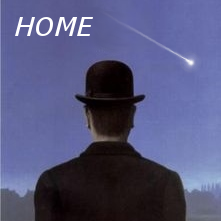A short tour through Cassiopeia
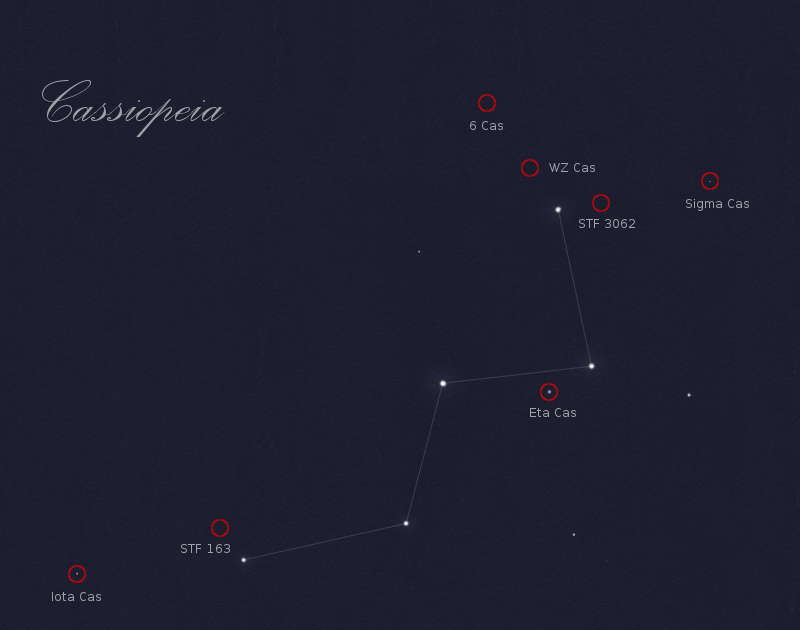
We had some good weather at the start of this week. There were some high clouds and the moon was up, but that didn’t stop me from appreciating the beauty of double stars from the garden. I picked this constellation that is in the darkest part of the sky, with the moon strategically positioned behind the house. Cassiopeia is filled with some really nice double stars.
From “The Cambridge Double Star Atlas” I looked at:
Eta Cas “Achird” (STF 60); m3.4, 7.5; Sep. 13.2”
A beautiful and bright duo, well seperated and with a nice difference in color. This pair is at only 19 LY distance and Achird physically resembles our own sun, hence the color is yellow. B is somewhat dimmer and has a “rusty” yellow color. Even with the moonlight a lot of stars can be seen in the field of view.

Iota Cas (STF 262); m4.6, 6.9, 9.0; Sep. 2.5”, 6.7”
A tight quintuple system from which two stars are directly visible and at 120x three stars can be split. A and C are double stars themselves, but the separation is too narrow to see. The main star is white/yellow, the close companion is yellow and the third one seems washed lightblue. Is there a D star in the sketch as well? I’m not sure.
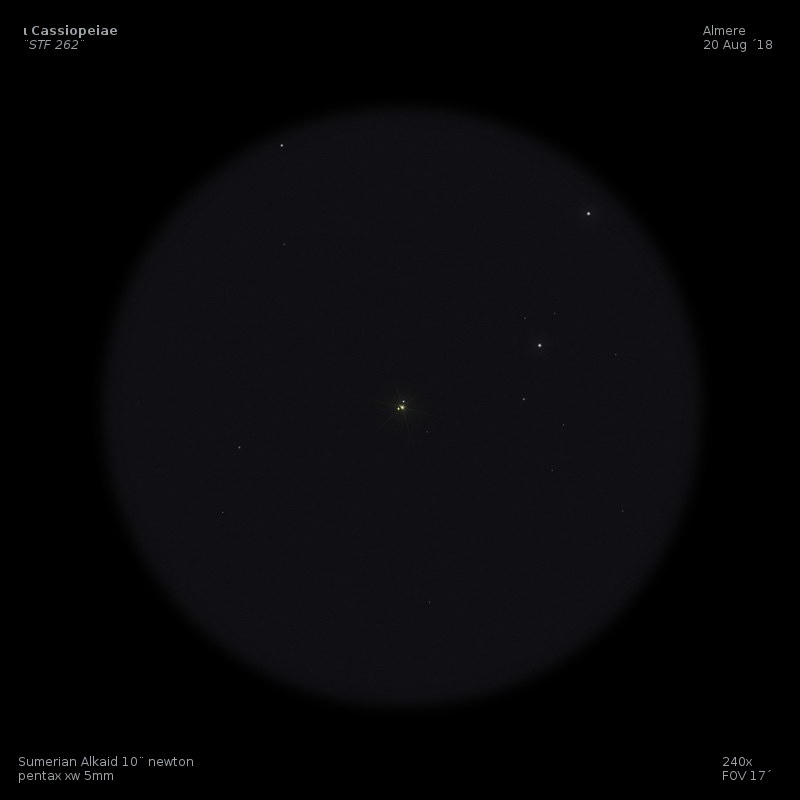
Sigma Cas (STF 3049); m5.0, 7.2; Sep. 3.1”
The next day I pay another visit to Cassiopeia. Sigma Cas is a nice and bright white (some yellow) star that is supposed to be blue, but I definitely don’t see that. The companion is blue without a doubt and a bit pale. They can be seperated at 120x. At 240x it’s a bit easier to draw, but at this magnification the main star is no longer a nice and small point and flutters a bit.
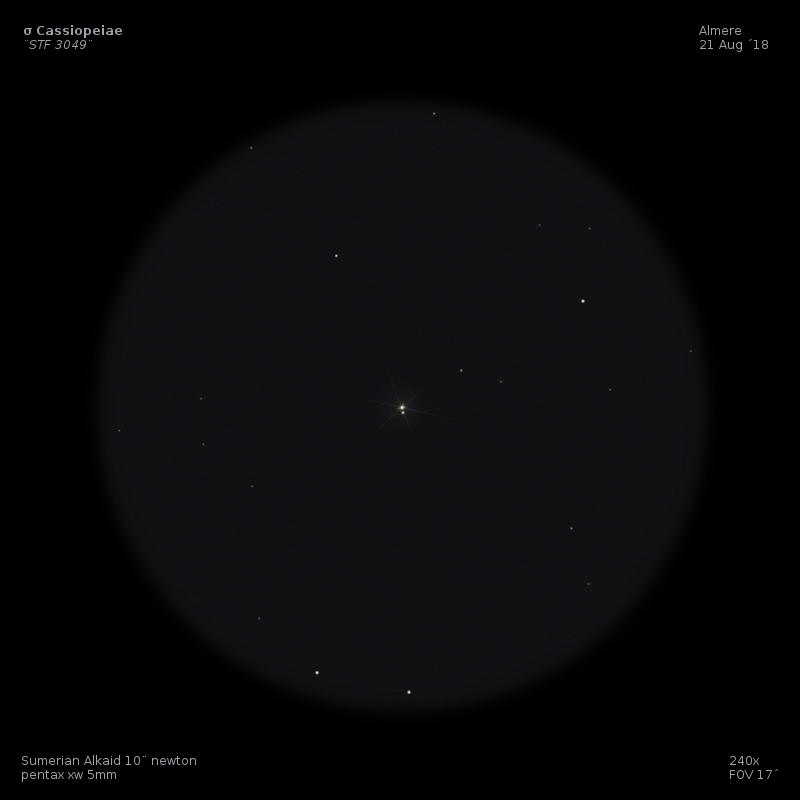
STF 163; m6.8, 9.1; Sep. 35”
A wide double, but with a nice contrast in color. The main star is not very bright (no spikes), but has a deep orange color with a yellow centre. Sometimes it’s hard to see the color of a star, but not in this case! B is a fine blue dot.
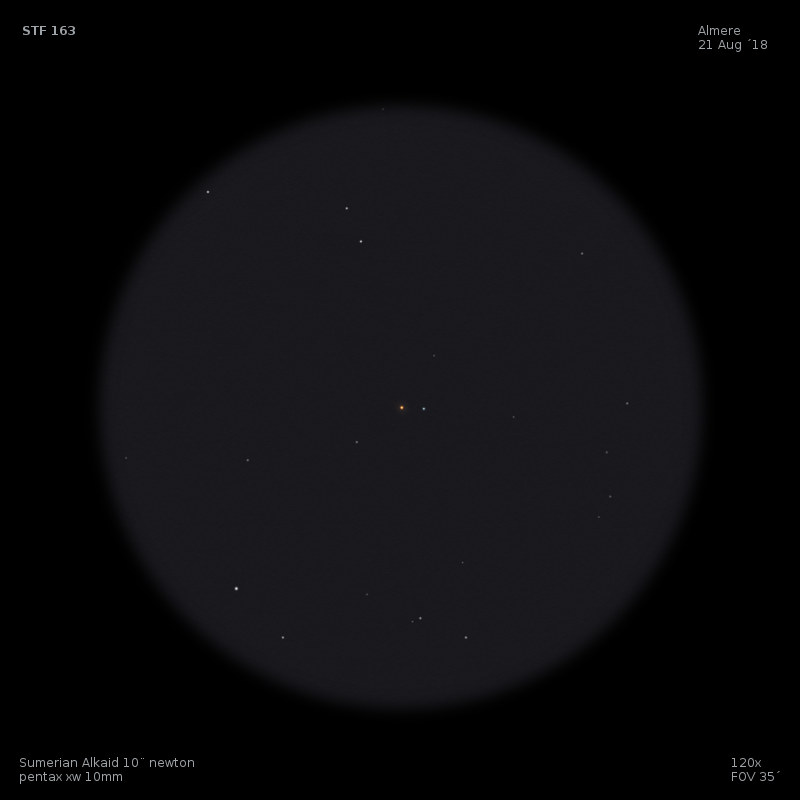
STF 3062; m6.4, 7.3; Sep. 1.6”
The third day in a row for Cassiopeia. STF 3062 is tight, but easily separated, probably because of the small difference in brightness. Still looks like a short “bar” at 120x, but at 171x there is a gap between them most of the time. A is yellow and B is too, though it appears a bit more golden. STF 3057 can be seen in the same field of view at lower magnification (so not in the sketch) and is worth a look too.
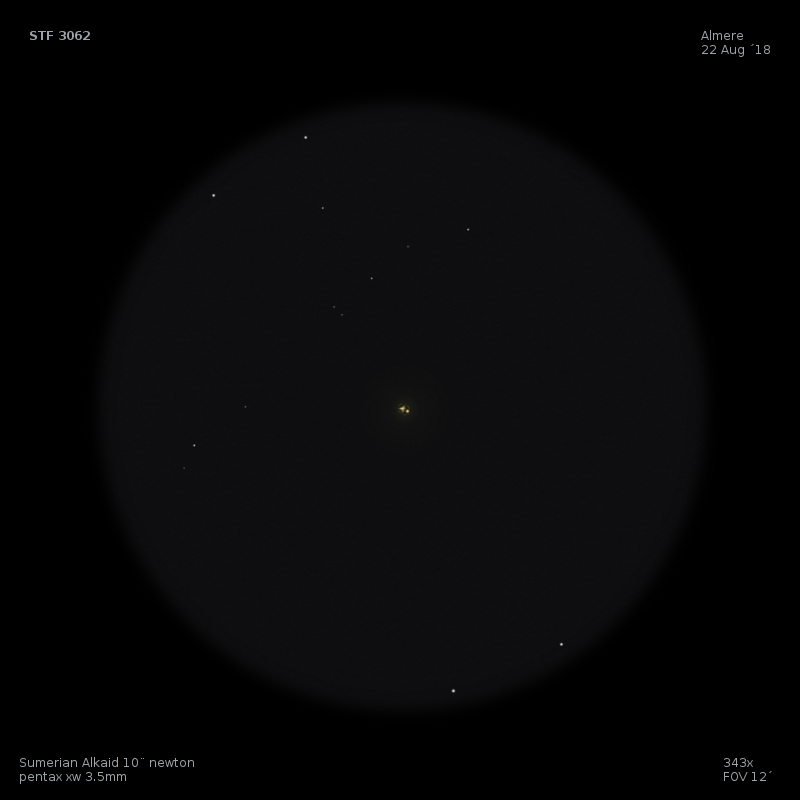
6 Cas (STT 508); (m5.7, 8.0; Sep. 1.5”)
This one is a bit more difficult because of the bigger difference in brightness I suppose, I can only split them at 240x. The sketch is made at 343x and then the stars are no longer neat points and some diffraction becomes visible. Still it’s a beautiful appearence, not in the least because of the rich starfield. A is (white)yellow and from the much dimmer companion the color is difficult to see. My guess is blueish.
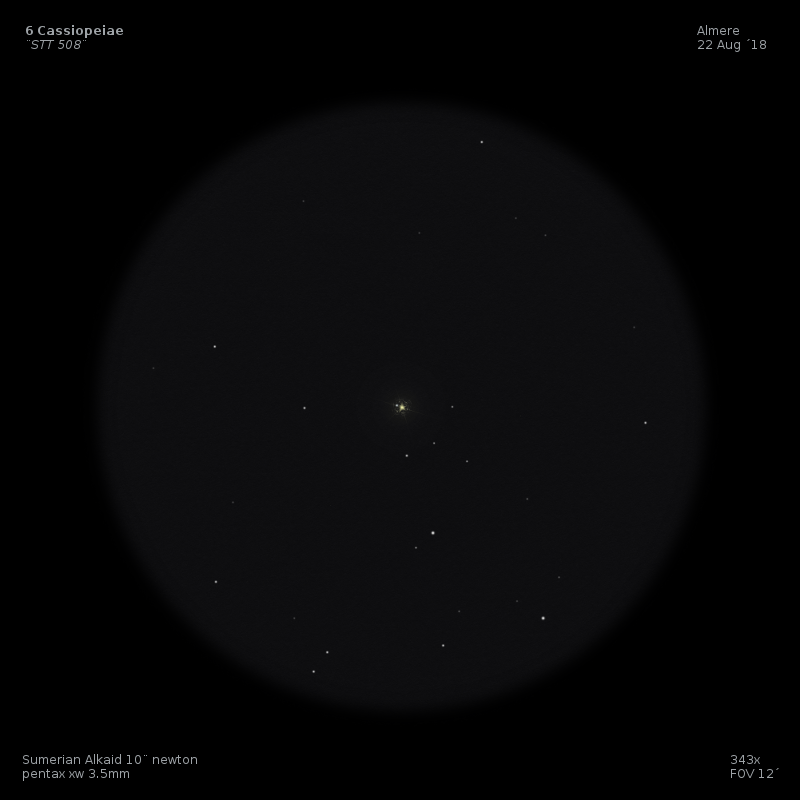
The final double star in Cassiopeia is WZ Cas which I sketched later that year. I discovered that I already came accross it while starhopping to 6 Cas back in August . I remember thinking what a beautiful pair it was, but forgot to investigate it afterwards.
Sketching the double was more like sketching an open cluster because it resides in such a rich starfield! But that only adds to the charm… The primary was seen as deep orange and the companion more of a pale blue. I’m not sure if identified the third star, but if I did it should be in the sketch as well.

Cassiopeia turns out to be a great constellation for observing double stars!
